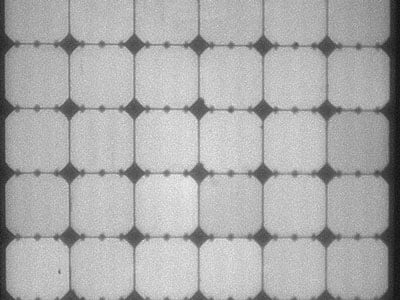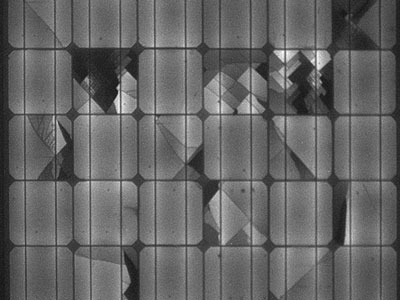ELCD Test: what is it and purpose?
With the help of an ELCD test (ELCD: electroluminescence crack detection), a PV manufacturer can evaluate the structural quality of solar cells and any other possible defects caused by improper handling of photovoltaic panels. Nowadays the majority of large solar panel manufacturers have integrated the ELCD test in their production lines. At the same time, many small and medium sized manufacturers do not invest in ELCD test equipment...
What defects can the ELCD test detect?
With the help of the ELCD test, a manufacturer can detect defects that are normally not visible. Defects that can be found with an ELCD test are:
- Broken cells and micro-cracks in the cells.
- Detection of busbar contact defects
- Detection of missing or interrupted screen-printed fingers
- Detection of non-homogeneity and foreign matter in the crystalline silicone
Why perform an ELCD test?
The ELCD test can detect hidden defects that were before untraceable by other testing methods, such as the thermal camera, I-V characteristics and flash test. Micro-cracks negatively impact the long term performance of solar cells.
Is the ELCD test enough to perform quality control?
Micro-cracks do not necessarily mean that the performance of the cells is affected. And the performance of the cells or the impact of micro crack on cells cannot be measured with an ELCD test. The output performance can be measured with a flash test. Professional solar PV quality testing companies would never accept to let pass any panels with cells that show micro cracks: as the long term performance can be affected, the panels should be replaced. For this reason, it is best to perform the ELCD test before the lamination process, so the defects solar cells can be replaced. After the lamination process the ELCD test can be performed again, to see if the cells have gone through the lamination process without any damage. An example ELCD testing result of a defect and a quality solar panel:
- ]

- ELCD testing - quality cells

